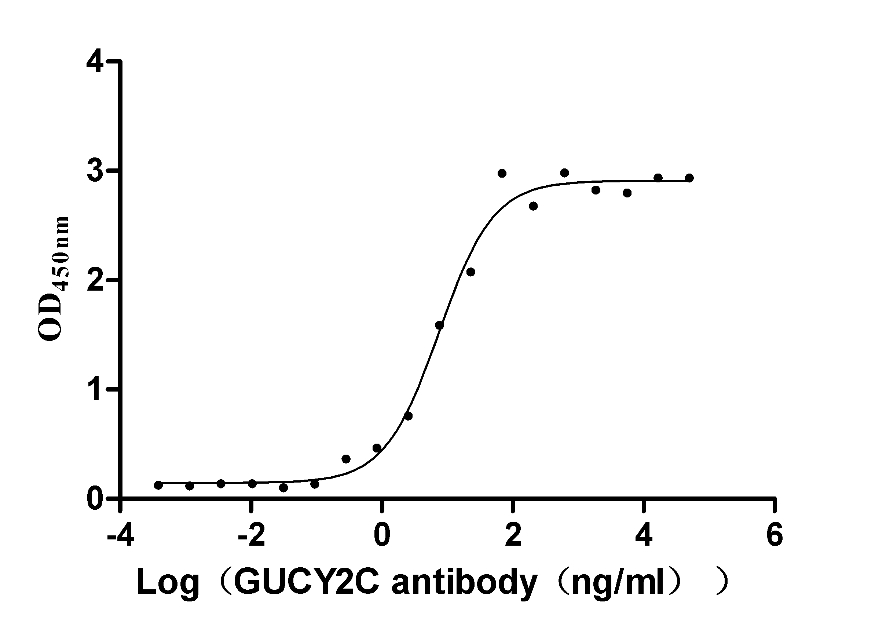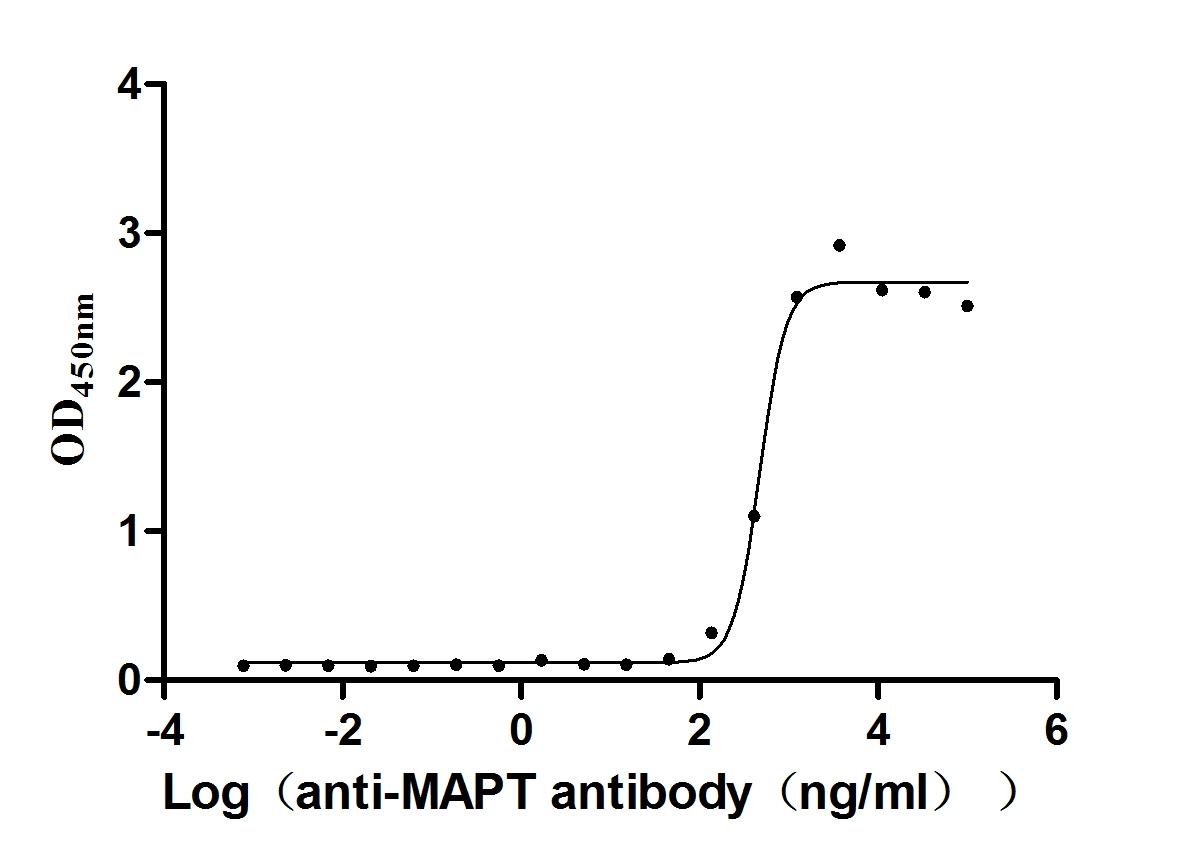Recombinant Human Epithelial splicing regulatory protein 1 (ESRP1)
-
货号:CSB-YP007832HU
-
规格:
-
来源:Yeast
-
其他:
-
货号:CSB-EP007832HU
-
规格:
-
来源:E.coli
-
其他:
-
货号:CSB-EP007832HU-B
-
规格:
-
来源:E.coli
-
共轭:Avi-tag Biotinylated
E. coli biotin ligase (BirA) is highly specific in covalently attaching biotin to the 15 amino acid AviTag peptide. This recombinant protein was biotinylated in vivo by AviTag-BirA technology, which method is BriA catalyzes amide linkage between the biotin and the specific lysine of the AviTag.
-
其他:
-
货号:CSB-BP007832HU
-
规格:
-
来源:Baculovirus
-
其他:
-
货号:CSB-MP007832HU
-
规格:
-
来源:Mammalian cell
-
其他:
产品详情
-
纯度:>85% (SDS-PAGE)
-
基因名:ESRP1
-
Uniprot No.:
-
别名:Epithelial splicing regulatory protein 1; Esrp1; ESRP1_HUMAN; FLJ20171; RBM35A; RMB35A; RNA binding motif protein 35A; RNA-binding motif protein 35A; RNA-binding protein 35A
-
种属:Homo sapiens (Human)
-
蛋白长度:full length protein
-
表达区域:1-681
-
氨基酸序列MTASPDYLVV LFGITAGATG AKLGSDEKEL ILLFWKVVDL ANKKVGQLHE VLVRPDQLEL TEDCKEETKI DVESLSSASQ LDQALRQFNQ SVSNELNIGV GTSFCLCTDG QLHVRQILHP EASKKNVLLP ECFYSFFDLR KEFKKCCPGS PDIDKLDVAT MTEYLNFEKS SSVSRYGASQ VEDMGNIILA MISEPYNHRF SDPERVNYKF ESGTCSKMEL IDDNTVVRAR GLPWQSSDQD IARFFKGLNI AKGGAALCLN AQGRRNGEAL VRFVSEEHRD LALQRHKHHM GTRYIEVYKA TGEDFLKIAG GTSNEVAQFL SKENQVIVRM RGLPFTATAE EVVAFFGQHC PITGGKEGIL FVTYPDGRPT GDAFVLFACE EYAQNALRKH KDLLGKRYIE LFRSTAAEVQ QVLNRFSSAP LIPLPTPPII PVLPQQFVPP TNVRDCIRLR GLPYAATIED ILDFLGEFAT DIRTHGVHMV LNHQGRPSGD AFIQMKSADR AFMAAQKCHK KNMKDRYVEV FQCSAEEMNF VLMGGTLNRN GLSPPPCKLP CLSPPSYTFP APAAVIPTEA AIYQPSVILN PRALQPSTAY YPAGTQLFMN YTAYYPSPPG SPNSLGYFPT AANLSGVPPQ PGTVVRMQGL AYNTGVKEIL NFFQGYQYAT EDGLIHTNDQ ARTLPKEWVC I
-
蛋白标签:Tag type will be determined during the manufacturing process.
The tag type will be determined during production process. If you have specified tag type, please tell us and we will develop the specified tag preferentially. -
产品提供形式:Lyophilized powder
Note: We will preferentially ship the format that we have in stock, however, if you have any special requirement for the format, please remark your requirement when placing the order, we will prepare according to your demand. -
复溶:We recommend that this vial be briefly centrifuged prior to opening to bring the contents to the bottom. Please reconstitute protein in deionized sterile water to a concentration of 0.1-1.0 mg/mL.We recommend to add 5-50% of glycerol (final concentration) and aliquot for long-term storage at -20℃/-80℃. Our default final concentration of glycerol is 50%. Customers could use it as reference.
-
储存条件:Store at -20°C/-80°C upon receipt, aliquoting is necessary for mutiple use. Avoid repeated freeze-thaw cycles.
-
保质期:The shelf life is related to many factors, storage state, buffer ingredients, storage temperature and the stability of the protein itself.
Generally, the shelf life of liquid form is 6 months at -20°C/-80°C. The shelf life of lyophilized form is 12 months at -20°C/-80°C. -
货期:Delivery time may differ from different purchasing way or location, please kindly consult your local distributors for specific delivery time.Note: All of our proteins are default shipped with normal blue ice packs, if you request to ship with dry ice, please communicate with us in advance and extra fees will be charged.
-
注意事项:Repeated freezing and thawing is not recommended. Store working aliquots at 4°C for up to one week.
-
Datasheet :Please contact us to get it.
靶点详情
-
功能:mRNA splicing factor that regulates the formation of epithelial cell-specific isoforms. Specifically regulates the expression of FGFR2-IIIb, an epithelial cell-specific isoform of FGFR2. Also regulates the splicing of CD44, CTNND1, ENAH, 3 transcripts that undergo changes in splicing during the epithelial-to-mesenchymal transition (EMT). Acts by directly binding specific sequences in mRNAs. Binds the GU-rich sequence motifs in the ISE/ISS-3, a cis-element regulatory region present in the mRNA of FGFR2. Regulates splicing and expression of genes involved in inner ear development, auditory hair cell differentiation, and cell fate specification in the cochlear epithelium.
-
基因功能参考文献:
- Results show that ESRP1 regulates CD44 splice isoform switching and EMT in ovarian cancer cells. PMID: 29130517
- In humans, ESRP1 is downregulated in inflamed biopsies from inflammatory bowel disease patients. ESRP1 loss is an adverse prognostic factor in colorectal cancer. Furthermore, generation of ESRP1-dependent GPR137 isoforms is altered in colorectal cancer and expression of a specific GPR137 isoform predicts colorectal cancer patient survival. PMID: 28975893
- Our study supports the role of ESRP1 as tumor suppressor and strongly suggests that ESRPs are candidate markers for early detection, diagnosis, and prognosis of CRC. PMID: 27650542
- High ESRP1 expression may thus stimulate growth of cancer epithelial cells and promote colorectal cancer progression. PMID: 28052020
- Results showed that the expression patterns of these genes were indicative of the onset of EMT in in-vitro models, but not in tissue samples. However, the ratio between ESRP1 or ESRP2 and RBFOX2 significantly decreased during EMT and positively correlated with the EMT-specific phenotype in cell models. Low ESRP1/RBFOX2 ratio value was associated with a higher risk of metastasis in early breast cancer patients. PMID: 27911856
- Downregulated ESRP1 by sirna resulted in an isoform switching from CD44v to CD44s, which modulated epithelial-mesenchymal transition. PMID: 29131012
- ALK oncogenic activity is involved in the regulation of an epithelial mesenchymal transition phenotype in a subset of non-small cell lung carcinomas by repression of the epithelial splicing regulatory protein 1. PMID: 27119231
- ZEB1-induced epithelial-to-mesenchymal transition and associated molecular changes in ESRP1 and CD44 contribute to early pathogenesis and metastatic potential in established lung cancer PMID: 27500490
- The molecular mechanisms by which ESRP1 and ESPR2 exert positive as well as negative effects on cancer progression have been summarized. (Review) PMID: 27401076
- Recombinant human ESRP1-RRM3 was subjected to biomolecular NMR and its chemical shifts and structural coordinates were determined and deposited in the BioMagResBank and Protein Data Bank respectively. Its interaction with RBPMS2 was mapped. PMID: 27108394
- Altered Expression and Splicing of ESRP1 in Malignant Melanoma Correlates with Epithelial-Mesenchymal Status and Tumor-Associated Immune Cytolytic Activity. PMID: 27045022
- Data show that both rab G-Protein RAB25 and RNA-binding protein ESRP1 were suppressed by transcription factor ZEB1, which was in turn regulated via epigenetic mechanisms. PMID: 26646320
- MCL1 with the deletion of 801G and 802A sites could not be correctly spliced by ESRP1 and no significant difference was seen in the expressions of isoform 1 and 3 in mutant MCL1 PMID: 26522352
- ESRP1 and ESRP2 suppress cancer cell motility via different mechanisms. PMID: 25143390
- Results show that ESRP1 regulates the expression pattern of FGFR-2 isoforms, attenuates cell growth, migration, invasion and metastasis, and is a favorable prognostic factor in pancreatic ductal adenocarcinoma. PMID: 24077287
- Data suggest that alternative splicing in ESRP1 transcripts in somatotroph adenomas is essential in epithelial-mesenchymal transition progression and in response to somatostatin analog antineoplastic treatment. PMID: 23825128
- ESRP1 and PNN modulate alternative splicing of a specific subset of target genes, but not general splicing events, in HCET cells to maintain or enhance epithelial characteristics. PMID: 23299472
- the transcription repressor Snail binds to E-boxes in the ESRP1 promoter, causing repression of the ESRP1 gene. PMID: 22961986
- ESRP1 could be a master regulator of the EMT process in pituitary adenomas causing acromegaly. PMID: 22585092
- deltaEF1 family proteins repress the expression of ESRPs to regulate alternative splicing during TGF-beta-induced EMT and the progression of breast cancers PMID: 22037216
- functions of the ESRP1 in an epithelial posttranscriptional gene expression program. PMID: 22354987
- The functional significance of EMT-associated alternative splicing was tested by expression of the epithelial-specific splicing factor ESRP1 PMID: 21876675
- ESRP1 coordinates a complex alternative splicing network that adds an important post-transcriptional layer to the changes in gene expression that underlie epithelial-mesenchymal transitions during development and disease. PMID: 20711167
- results further establish ESRP1 and ESRP2 as global regulators of an epithelial splicing regulatory network. PMID: 19829082
- The FLJ20171 gene was shown to effectively separate these two chromophobe renal cell carcinoma (RCC) and benign oncocytoma groups by quantitative reverse transcription-PCR using fresh tissue samples, with similar trends seen on formalin-fixed tissues. PMID: 17145811
- Results demonstrate that RBM35A functions as a tumor suppressor in colon cancer cells, and suggest that RBM35A is involved in posttranscriptional regulation of a number of genes by exerting a differential effect on protein translation via 5'UTRs of mRNAs. PMID: 19177006
- ESRP1 and ESRP2 are epithelial cell-type-specific regulators of FGFR2 splicing. PMID: 19285943
显示更多
收起更多
-
亚细胞定位:Nucleus.
-
蛋白家族:ESRP family
-
组织特异性:Epithelial cell-specific.
-
数据库链接:
HGNC: 25966
OMIM: 612959
KEGG: hsa:54845
STRING: 9606.ENSP00000405738
UniGene: Hs.487471
Most popular with customers
-
Recombinant Human Tumor necrosis factor ligand superfamily member 18 (TNFSF18), partial (Active)
Express system: Mammalian cell
Species: Homo sapiens (Human)
-
Recombinant Human Tumor necrosis factor ligand superfamily member 8 (TNFSF8), partial (Active)
Express system: Mammalian cell
Species: Homo sapiens (Human)
-
Recombinant Human Heat-stable enterotoxin receptor (GUCY2C), partial (Active)
Express system: Mammalian cell
Species: Homo sapiens (Human)
-
Recombinant Human Glucagon receptor (GCGR), partial (Active)
Express system: Mammalian cell
Species: Homo sapiens (Human)
-
Recombinant Mouse Microtubule-associated protein tau (Mapt) (Active)
Express system: Mammalian cell
Species: Mus musculus (Mouse)
-
Recombinant Human Claudin-3 (CLDN3)-VLPs (Active)
Express system: Mammalian cell
Species: Homo sapiens (Human)
-
Recombinant Mouse Cell adhesion molecule 1 (Cadm1), partial (Active)
Express system: Mammalian cell
Species: Mus musculus (Mouse)
-
Recombinant Human Cadherin-6(CDH6),partial (Active)
Express system: Mammalian cell
Species: Homo sapiens (Human)




















